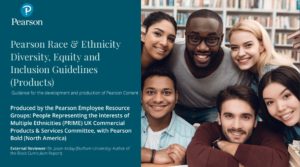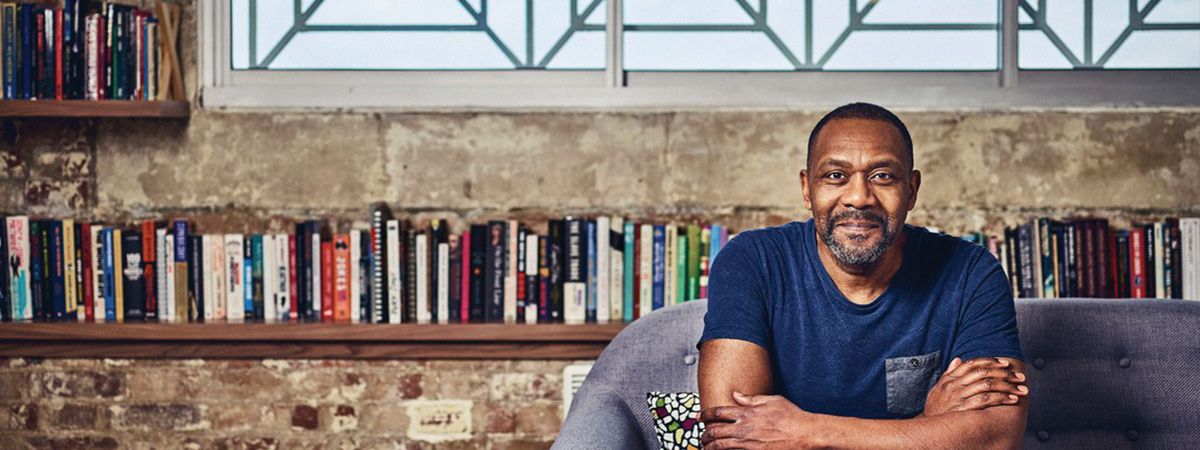
Photo by John Anvik on Unsplash
Too many of those creating and seeking to improve the diversity of our educational materials are doing so without representation at the decision making tables.
In both the commercial and non-profit sectors of educational publishing, a place that has a HUGE impact on the perceptions of millions of young people, the key roles in making that content are mostly held by middle class white people from the south of England (and though largely female at bottom of those organisational hierarchies, it is increasingly male at the top) – and that homogeny isn’t healthy.
Put simply, we can’t fix this with training and awareness raising alone. In this post- I’ll outline the issue, why it matters and invite you to join me in tackling the problem of Equality, Diversity and Inclusion (EDI) in editorial – through bringing people together to make change possible – in EDITalk.
What’s the problem, anyway?
As someone who has a mixed background and works in educational publishing, I have been referred to as ‘exotic’ and ‘proof of diverse recruitment’. I’ve seen tokenism, white-fragility and even outright discrimination at work and, even though I present as a white man and have many privileges to act, I’ve struggled to this call out – or (worse) even see when there was a problem! Things have improved in the 20 years since I left the classroom, and even more so since last year, in terms of awareness – but representation remains an issue.
The issue of who’s behind the camera, as well as in front of it – has been given prominence by stars of big and small screen – and even there, it’s tough. For example, Sir Lenny Henry recently founded the Centre for Media Diversity to tackle this problem here in the UK, after little or no progress since his blistering talk to Bafta in 2014, pointing out how poor representation is in the media industry.
Why educational publishing?
It’s fair to say that the world of educational publishing is a little less exciting than that of TV and Film, and with a much smaller chance of making big money. Most people who work in my sector do so because they have a close connection to schools (eg ex-teachers) or because they happened upon it. There are very few kids who dream of publishing textbooks. That said, it does have a huge impact on the lives of young people – and therefore (boring in comparison to prime time TV though it may be) very important to our society and economy.
However, it is a sector with a huge diversity deficit. As the Publishers Association recognised in it’s report last year – there has been very little change – and even where things look good, there are geographical and statistical issues as the main centres of publishing (ie London) have much greater diversity than the national average – so these numbers are worse that they might appear! But for the few people who work in publishing who are not white, female, middle class, cis-straight and able-bodied – this would be no surprise.
Why editorial only?
In publishing, editorial teams include commissioners of content, product developers and product managers – who interpret the market, propose, commission and shape the product before you see it in school. It is the editorial team who decide which authors to work with, which illustrators and images to use, which suppliers to commission, and users / customers to target. Essential roles, like development editors, do so much to shape the content – and make tonal judgements. So, while everyone in an organisation has a responsibility to work on the diversity of content, it’s the editorial team that has the biggest influence on the product.
What are you already doing?

Pearson Race and Ethnicity DE&I guidelines – Part of the Pearson editorial policy, which includes Gender, LGBTQ+ and Disability.
I’ve embraced the chance to help train colleagues at Pearson in applying new editorial guidelines for Diversity, Equity and Inclusion (DE&I also called EDI in other organisations – eg the London Assemby) – most recently around Race and Ethnicity and Gender. Guidance for LGBTQ+ and Disability is due later in the year. These excellent resources, which are available for other organisations to view here, promoted a set of questions about how to apply them in our day-to-day work.
Over the past year, as I’ve looked around the virtual rooms we were in, I noticed that we were asking our predominantly non-diverse teams to do really hard work, based on this training alone – and, while support was offered by groups representing BAME, Women, LGBTQ+ and Disabled colleagues – there was a notable gap where the work is happening. There has been considerable feedback on this and the business is now reviewing options on how to tackle this more helpfully.
In reflecting on my role in this, I thought I’d explore this more, to check how widespread this issue is. I called out in my networks to find editors in the UK educational publishing industry with diverse racial and ethnic backgrounds (as a starting point). In total, I have found less than 10 people. Outside of Pearson, I have been able to find only three BAME editorial folk: two of whom I’ve spoken to, to better understand their lived experiences.
Bottom line is that we need more people coming into the sector who can represent a broader and more accurate view of our society to our children and the educators that work with them. It doesn’t mean ignoring the expertise of those already doing this work – but rather than just leaving a door open – actively helping people over the threshold into educational publishing.
What are you going to do about it then?
Take action! I’m thinking of small steps that are smaller than I’d like, but they are a start.
1 – Run a monthly Twitch channel – livestreaming – called EDITalk (Did you see what I did there?). EDITalk will seek to do 3 things:
- Show what it looks like when content is created and shaped when the representation in the process is better. We’ll be using the Pearson DE&I guidelines on ‘raw’ content and discussing the process with invited guests.
- Encourage diverse people into the educational publishing sector – by showing them who is already here and why we love this work!
- Support colleagues across the sector to open their thinking and find new way to improve the diversity of our teams. If you think this is something you’d like to watch or be involved in – please sign up here.
2 – An offer to mentor up to 3 people, who identify as coming from underrepresented groups in educational publishing, over the next year. Nothing wildly formal (at this point) but I promise at least one conversation a month, and access to my network of people. Again, if you are interested, in being mentored – or helping others – please sign up here
3 – These ideas are above and beyond my day job and do not in any way come under my Pearson responsibilities. However, I’m also going to continue working hard at Pearson, with colleagues, to find ways to support this activity from within our privileged space in the market – and seek to make connections. If you have thoughts or suggestions about what Pearson are doing – please share your feedback in the comments area – and I’ll pass them on.
I have bolder plans – but, for now, this is a simple starting point where I hope I can learn with others about how best to scale, focus and improve this work!
What can I do, again?
- Sign up here – if you’d like to be part of EDITalk or mentoring
- Tell me about other people doing this sort of work in the comments
- Link me up to possible partners – either on Twitter or Linkedin – or in the comments.
- Critique. It’s ok! I need to hear it. I might be well intentioned but misguided. Tell me why! Use the comments so we can all learn from each other.
I’d welcome your feedback – especially if you spot any errors (!) 😉

